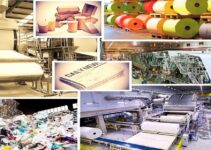PESTLE Analysis of Jollibee Food Corporation. Jollibee is a retail chain fast food multinational brand and company. Tony Tan Caktiong established the food-chain brand Jollibee in 1978. Jollibee’s headquarter is situated in Jollibee Plaza, Pasig, Philippines.
Some of the main products and services of the fast-food brand Jollibee are as follows;
- Snacks
- Kid’s meal
- Beverages
- Dumplings
- Pizzas
- Cakes
- Pastries
- Hamburgers
- Chickens
- Fries
- Coffee
- Desserts
- Breakfasts
Key statistical facts and figures about Jollibee are as follows;
- Jollibee’s annual revenue in 2022 was 2.8 billion Philippine Pesos
- The net income of the food brand amplified by 351.7%
- Approximately 12,831 employees are working for the company
- Fast-food chain brand has a network of 5900 retail stores across the world
Some of the top competitors of Jollibee are as follows;
- Jack in the Box
- A&W Restaurants
- Chick-fil-A
- Whataburger
- White Castle
- In-N-Out Burgers
- Burger King
- Chipotle
- Unilever
- Nestle
- Starbucks
- McDonald’s
- Church’s Chicken
Today, we’ll discuss the pestle analysis of Jollibee. It is going to focus on the external political, economic, social, technological, legal, and environmental factors impacting the fast food brand. Here’s a pestle analysis of Jollibee as follows;
Political Factors Impacting Jollibee
Some of the main political factors in the pestle analysis of Jollibee are as follows;
Labor Cost
In order to maintain profitability, Jollibee depends on cheap labor to perform the company’s daily operations. The Filipino workforce prefers to work in other countries where they could earn a better source of living due to the currency exchange. However, it causes a shortage of labor in the home country. The limited supply of labor increases the labor cost and amplifies the company’s operational cost ultimately.
Government Policies
The government policies of different countries for food-fast companies are different. Chain hotel and restaurant brands have got no other choice but to comply with government policies. Often, it results in the form of high cost.
Economical Factors Impacting Jollibee
Some of the main political factors in the pestle analysis of Jollibee are as follows;
Taxes
According to an estimate, the British government is imposing 30% taxes on meat-consuming food brands, and other duties on salt and sugar-consuming brands. High taxes decrease the company’s profitability and revenue stream.
Production Cost
Chicken is one of the main ingredients of Jollibee’s menu and other food items. The increment in the chicken’s price amplifies the production cost; it directly impacts the company’s profitability. Overall, food inflation has decreased to a great extent in the Philippine market, it has lifted the cost pressure on the company’s operations.
Social Factors Impacting Jollibee
Some of the main political factors in the pestle analysis of Jollibee are as follows;
Customer Preferences
The consumer food interest and preferences have shifted from sugary and salty food to organic and vegetarian-based diets and food items. Since chicken and meat are the key elements of Jollibee’s menu, the changing interest and consumer preferences would directly impact the fast food company’s profitability.
High Spending on Dietary Food
If we study the consumer spending pattern, then we would realize that consumer spending on organic and nutrition-based food items has increased. It is significant that Jollibee should change its focus on dietary-based food items.
Technological Factors Impacting Jollibee
Some of the main political factors in the pestle analysis of Jollibee are as follows;
Digitalization
The usage of digital technology is increasing for the past few years. Jollibee should employ digital technology in its production, operational, and supply chain processes. Digitalization allows the company to reduce production costs and achieve operational efficiency.
Self Ordering Kiosks
Many food companies are utilizing industrial robots in their production processes. Self-ordering kiosks and easy checkouts are some of the top examples of industrial robots that Jollibee could employ in its chain restaurants to improve the customer experience.
Legal Factors Impacting Jollibee
Some of the main political factors in the pestle analysis of Jollibee are as follows;
Ban & Restrictions
The UK government is imposing bans and restrictions on the marketing of sugar, oily, and salty food items; because they are the major cause of obesity among children. Such types of bans and restrictions impact Jollibee’s growth and profitability in the European market. In fact, the Chinese government imposes strict policies on food-serving companies.
Environmental Factors Impacting Jollibee
Some of the main political factors in the pestle analysis of Jollibee are as follows;
Environmental Concerns
The consumer market has become highly cautious about the safety of the environment. Customers prefer to dine those chain restaurant brands that care about the environment. However, some of their environmental concerns are as follows;
- Climate mitigation
- Meat reduction
- Animal welfare
Food Packaging
Regulatory authorities and environmental activists are putting a great emphasis on sustainable food packaging material. Consumers want biodegradable packaging material that would easily decompose and become part of nature again; because it won’t cause environmental pollution.
Conclusion: PESTLE Analysis of Jollibee Example Company
After an in-depth study of pestle analysis of Jollibee; we have realized that Jollibee is a leading fast-food retail chain brand. If you are learning about the impact of external environmental factors on the fast food brand, then you should keep in mind the abovementioned external political, economical, social, technological, legal, and environmental factors impacting the company.

Ahsan Ali Shaw is an accomplished Business Writer, Analyst, and Public Speaker. Other than that, he’s a fun loving person.


